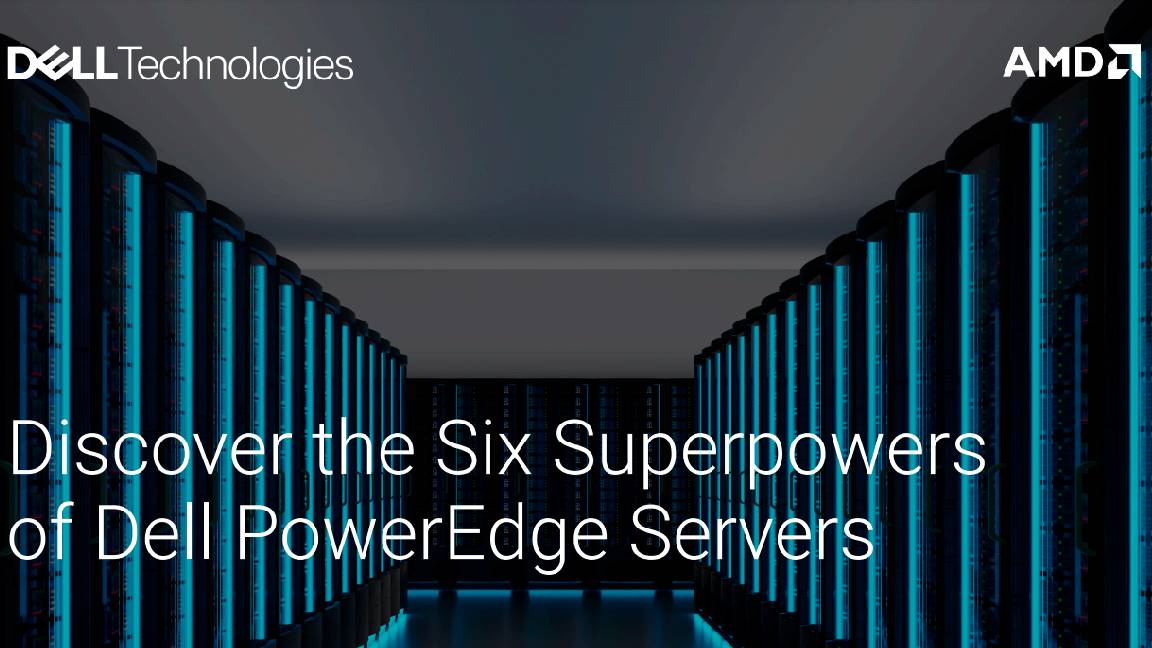What is data democratization and how will embracing it benefit your business?
Data is no longer the preserve of a small number of highly skilled employees – everyone across the organization may soon have the tools to derive real-time insights at pace


With AI and other groundbreaking technologies growing in popularity and capabilities, more and more data is becoming available to employees who may not have traditionally had the skills or expertise to use it in their day-to-day workloads. This is data democratization – the idea that we can make data more accessible beyond simply available to data scientists or engineers – so that more people across a business can use it to derive valuable insights and shape decision-making.
There are plenty of benefits to embracing data democratization, as well as risks. But instigating a data democratization drive is a complex strategic process that requires not just a technological shift, but also a cultural and mindset shift.
The rise of generative AI has also had a massive influence on data democratization. Embracing this paradigm shift requires leaders to pursue dedicated programs across various disciplines so that their businesses can truly gain a competitive edge and make better, quicker, and smarter data-driven decisions at several levels.
What is data democratization?
Democracy refers to the distribution of power to the people of a society – ensuring that a single person or entity is not dominant without the consent of the masses. In exchange, people agree to live within certain rules and structures. Data democratization follows the same pattern, director of data at Penguin Random House, Pete Williams, tells ITPro.
"Excepting certain security and confidentiality needs, access to data should be decreed open and equal for all members of an organization who could find a use for it," Williams says. "Those colleagues should receive appropriate access to tools and training to unlock potential data use cases."
It opens up data to everyone in an organization regardless of technical expertise, removes silos, increases data literacy, and allows self-service so that employees across the breadth of an organization can use data responsibly. A central team may be responsible for gathering, governing, and distributing data, Williams adds, but structures and controls ensure people can trust the data they access.
What are the benefits and risks of data democratization?
There are several benefits to data democratization. These include reduced reliance on IT resources – allowing users to identify trends and make real-time decisions – enhanced collaboration, and improved employee engagement by allowing them to contribute to improving customer experiences, says Forrester analyst Jayesh Chaurasia. "These factors directly contribute to a higher return on data investments and enhanced market competitiveness," he tells ITPro.
Get the ITPro daily newsletter
Sign up today and you will receive a free copy of our Future Focus 2025 report - the leading guidance on AI, cybersecurity and other IT challenges as per 700+ senior executives
Williams says that by instigating data democratization, you have a much larger pool of well-informed decision-makers across the organization, who collectively take more key decisions than were previously possible.
"Data-enabled organizations are more innovative, more agile, and have a better sense of the connectivity across domains or pillars that enable business processes," he explains. "This DNA exposure helps them understand how the organization truly functions and where it could become more efficient. I’d expect lower costs, higher productivity, more innovation, and a better connection of the product to the customer."
On the flip side, there are a handful of risks. An organization may not appreciate the loss of control over decision-making that data democratization permits, Williams adds. It can also feel that different delivery models may occur when the pace of change outweighs the control systems in place – in short if there are no guardrails or governance measures to manage this shift, it may feel like things are spinning out of control. "To use the racing analogy, 'slow down to speed up', as if you don’t brake sometimes, you’re going to spin out at the corner."
Data democratization and AI: A key trend in 2025
Has AI influenced data democratization trends? It's complicated if you ask our experts. Chaurasia describes AI as a "game changer" thanks to the way it has helped users look for and access data using natural language processing. "Interaction using natural language has also lowered the technical barriers for users to query and analyze data," he elaborates. "It is helping improve the understanding of data by creating summaries and explanations about data, queries, analytics, results, and visualization.
Williams attributes a more nuanced impact on generative AI and says in some ways it has hurt data quality. "To the non-technical user, it looks too easy, and they expect the simple provision of useful, consistent, accurate information to be solved by 'adding ChatGPT’," he says.
"But it has driven curiosity and expectation, which can be helpful to the data democratizers if they can maintain the momentum," he continues. He agrees with Chaurasia on natural language, adding the biggest impact will be the "short-circuiting of data literacy needs" and by making "deeper analytics a conversation rather than an equation".
How to implement a data democratization strategy
To become data-driven, businesses must embrace a new management paradigm, according to Harvard Business Review. Everyone within the organization must be empowered to work with data, regardless of how far outside their comfort zone it may be or their experience levels, but doing so requires several measures that need to be taken in parallel – not just new just making new technologies, tools, and systems available.
Fundamentally, argues Williams, the C-suite should want to democratize data and then focus on "instilling a culture of measurement and asking better questions".
On the technology side of the equation, says Chaurasia, organizations should invest in data fabric architecture, unified governance tools, data quality and observability platforms, and cloud-native applications. If these tools are embedded with machine learning (ML), automation, and generative AI features, then all the better.
But, as he and Williams agree, technology is the easy part. Williams adds: "It’s simple to initiate and join up a modern data stack where you can gather, process, and send data in almost any way you want; I do not see that as a barrier."
RELATED WHITEPAPER

"There should be dedicated resources for change management to address user concerns and resolve resistance," says Chaurasia on the cultural changes. "Organizations need to promote a data-driven approach and a data product mindset. This helps employees understand the importance of data and the roles they play in leveraging data for growth."
This must come in addition to a data literacy program that focuses on not just tool usage but on processes, workflows, and responsibilities. Users should understand frameworks, data ownership, and the importance of data quality, he adds, with governance and quality seen as everybody's joining responsibility.

Keumars Afifi-Sabet is a writer and editor that specialises in public sector, cyber security, and cloud computing. He first joined ITPro as a staff writer in April 2018 and eventually became its Features Editor. Although a regular contributor to other tech sites in the past, these days you will find Keumars on LiveScience, where he runs its Technology section.
-
 Bigger salaries, more burnout: Is the CISO role in crisis?
Bigger salaries, more burnout: Is the CISO role in crisis?In-depth CISOs are more stressed than ever before – but why is this and what can be done?
By Kate O'Flaherty Published
-
 Cheap cyber crime kits can be bought on the dark web for less than $25
Cheap cyber crime kits can be bought on the dark web for less than $25News Research from NordVPN shows phishing kits are now widely available on the dark web and via messaging apps like Telegram, and are often selling for less than $25.
By Emma Woollacott Published